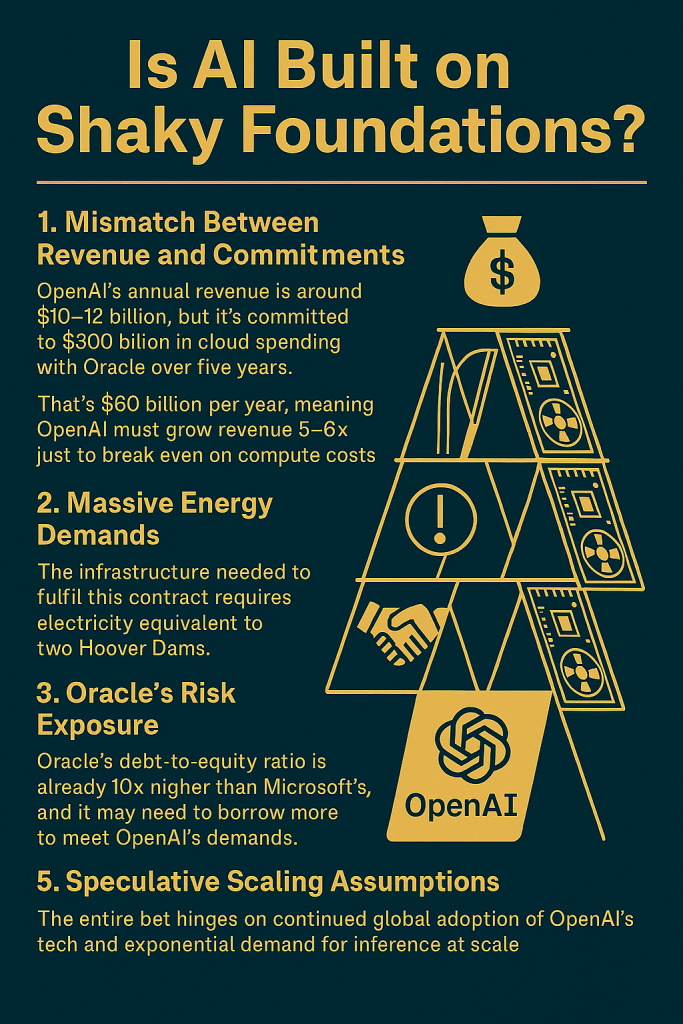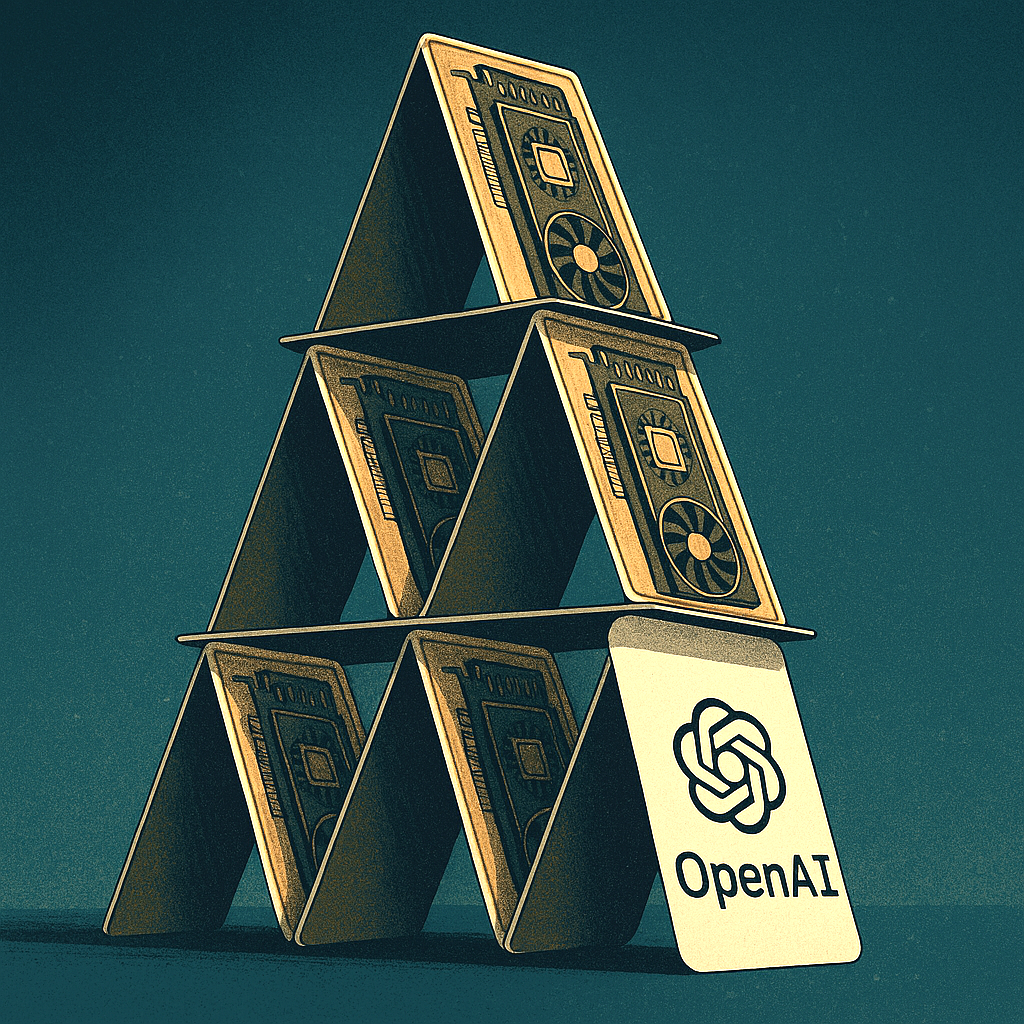There’s growing concern that parts of the AI boom—especially the infrastructure and monetisation frenzy—might be built on shaky foundations.
The term ‘AI house of cards’ is being used to describe deals like Oracle’s multiyear agreement with OpenAI, which has committed to buying $300 billion in computing power over five years starting in 2027.
That’s on top of OpenAI’s existing $100 billion in commitments, despite having only about $12 billion in annual recurring revenue. Analysts are questioning whether the math adds up, and whether Oracle’s backlog—up 359% year-over-year—is too dependent on a single customer.
Oracle’s stock surged 36%, then dropped 5% Friday as investors took profits and reassessed the risks.
Some analysts remain neutral, citing murky contract details and the possibility that OpenAI’s nonprofit status could limit its ability to absorb the $40 billion it raised earlier this year.
The broader picture? AI infrastructure spending is ballooning into the trillions, echoing the dot-com era’s early adoption frenzy. If demand doesn’t materialise fast enough, we could see a correction.
But others argue this is just the messy middle of a long-term transformation—where data centres become the new utilities
The AI infrastructure boom—especially the Oracle–OpenAI deal—is raising eyebrows because the financial and operational foundations look more speculative than solid.
Here’s why some analysts are calling it a potential house of cards
⚠️ 1. Mismatch Between Revenue and Commitments
- OpenAI’s annual revenue is reportedly around $10–12 billion, but it’s committed to $300 billion in cloud spending with Oracle over five years.
- That’s $60 billion per year, meaning OpenAI would need to grow revenue 5–6x just to break even on compute costs.
- CEO Sam Altman projects $44 billion in losses before profitability in 2029.
🔌 2. Massive Energy Demands
- The infrastructure needed to fulfill this contract requires electricity equivalent to two Hoover Dams.
- That’s not just expensive—it’s logistically daunting. Data centres are planned across five U.S. states, but power sourcing and environmental impact remain unclear.

💸 3. Oracle’s Risk Exposure
- Oracle’s debt-to-equity ratio is already 10x higher than Microsoft’s, and it may need to borrow more to meet OpenAI’s demands.
- The deal accounts for most of Oracle’s $317 billion backlog, tying its future growth to a single customer.
🔄 4. Shifting Alliances and Uncertain Lock-In
- OpenAI recently ended its exclusive cloud deal with Microsoft, freeing it to sign with Oracle—but also introducing risk if future models are restricted by AGI clauses.
- Microsoft is now integrating Anthropic’s Claude into Office 365, signalling a diversification away from OpenAI.
🧮 5. Speculative Scaling Assumptions
- The entire bet hinges on continued global adoption of OpenAI’s tech and exponential demand for inference at scale.
- If adoption plateaus or competitors leapfrog, the infrastructure could become overbuilt—echoing the dot-com frenzy of the early 2000s.
Is this a moment for the AI frenzy to take a breather?







